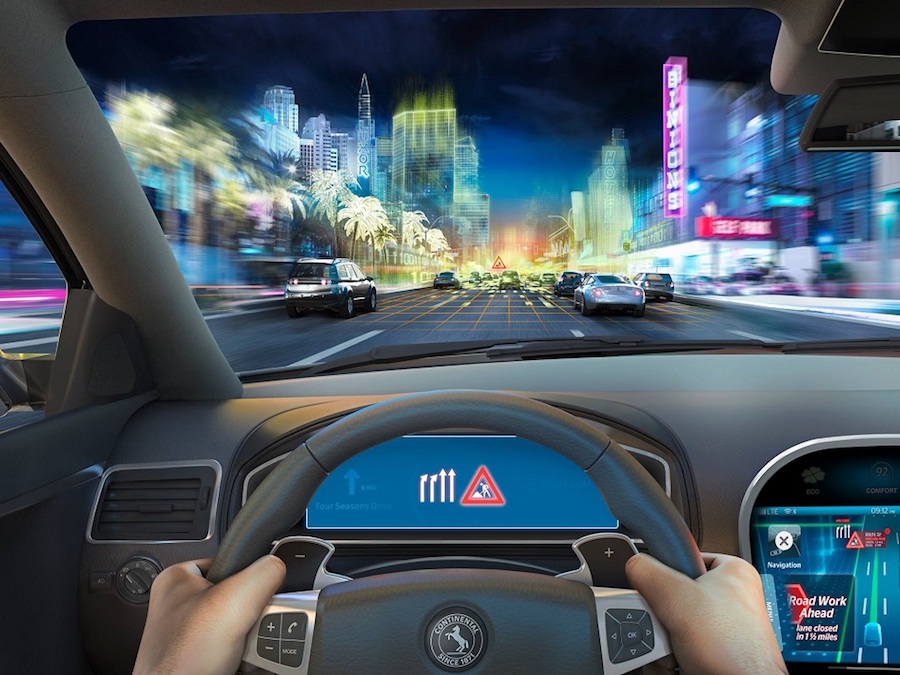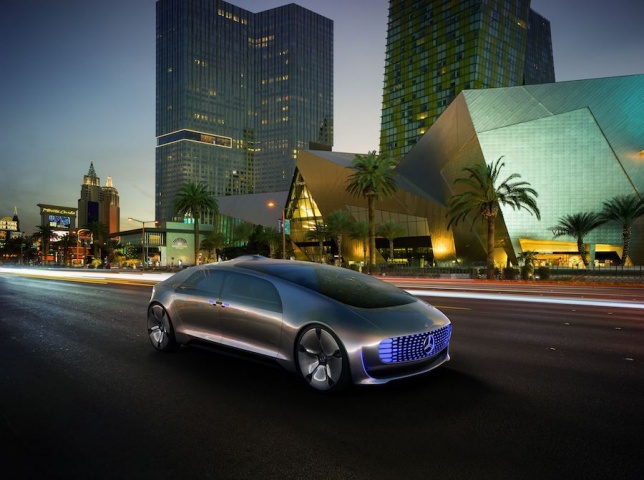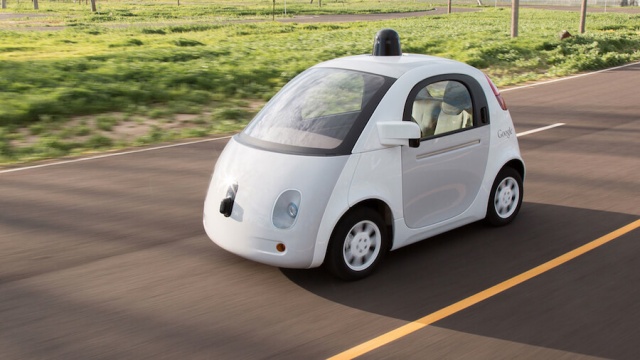Influential US institute says self-driving cars are about to demolish our model of car ownership.
Not so long ago, you couldn’t move for predictions of ‘Peak Oil’ and the dire economic fallout that would follow. According to the prophecies of the likes of M. King Hubbart, Kenneth S. Deffeyes and Matthew Simmons - petroleum industry experts all - peak oil, the point at which drilling and refining of oil can no longer keep pace with demand would either strike in 2020, maybe sooner or possibly had already arrived in 2007, but the global recession that followed after concealed its affects.
Concerns over peak oil kind of faded away in the last few years, not least because of impressive (though environmentally dubious) new sources of oil and gas, such as chemical fracturing projects and the tapping of ‘tar sands’ in places such as Canada and Alaska. The peak began receding into the distance.
Now though, another potential peak has appeared on the horizon and it’s closer by far than peak oil. The influential Rocky Mountain Institute, a US-based think tank focused on the potential for a low-carbon economy, has now predicted ‘Peak Car.’
Peak car is the point at which we stop buying cars, or at least we stop buying cars so much. Car sales fell precipitously around the globe in the wake of the 2008 credit crunch and the roiling recession that followed, but they have recovered impressively ever since as pent-up demand was unleashed, employment rose again and interest rates, so crucial for all those PCP deals, remained historically low.
That could all be coming to a no-pun-intended crashing halt though with the rise and rise of robot cars. Autonomous vehicles certainly have the potential to transform the motoring landscape, not least releasing all those who simply don’t really care about owing a car, or see it as a chore, from current ownership models. Car makers have long been touting the brilliance of pay-as-you-go ownership schemes, where you pay a monthly fee similar to that of your mobile phone (albeit more expensive) and simply use what car or van you need when you need it. The missing link has been the concept of getting that vehicle to the user, a gap that robotic cars can easily bridge.
It’s been easy to assume that such technology was still at least at arm’s length - that the sheer power of electronics and computing needed would condemn robotic cars to the same fate as nuclear fusion; always twenty years away. Not so, says the Rocky Mountain Institute. In two years’ time, it predicts, self-driving cars will have reached the point of being as affordable to use as a conventional car, a point at which our world could potentially be turned upside down.
“Upon debut, fully autonomous vehicles could reduce the cost of on-demand point-to-point mobility services like Uber and Lyft to near cost parity with owning and driving a car (around $0.85 per mile), allowing consumers to economically choose these services exclusively over a personal vehicle” says a report compiled by authors Charlie Johnson and Jonathan Walker. “Despite current technological and potential regulatory barriers, many of the world’s most powerful companies are racing to deploy automated mobility services as soon as 2017 in certain U.S. cities.”
Indeed the report reckons that the critical factor in bringing the cost of a robot car down to around the important USD$1 per mile, about the same as that of owning, fuelling and insuring a conventional car, is getting rid of the drivers currently used by the likes of Uber and Lyft. Ride-hailing services are all well and good, but their biggest cost base is paying the drivers. Although robot tech is hardly cheap, once installed it begins paying for itself pretty quickly. Robots don’t need holidays nor sick pay, after all. The report estimates that by 2025 there will be a potential USD$120-billion on offer to those offering ride hailing services.
While such tech might make taxi rides rather more pleasant (unless artificial intelligence can also replicate intransigent opinions on immigration and sporting rules) the big changes will come as the current driving and owning population seeks to shift to an on-demand setup. According to the report, within 15-20 years, the reports estimates that automated transportation could snag as much as two-thirds of the US personal transport market. And, pickups and a fondness for Donald Trump aside, where America leads, we often follow.
That could have a disastrous effect on car makers who are unready to negotiate the shifting sands. The reports suggests that “carmakers that excel in providing autonomous vehicles and automated mobility services stand to prosper greatly in the next two decades. As personal vehicle demand drops, demand for autonomous vehicles to perform mobility services will grow. Demand for autonomous service vehicles will compensate for lost demand for personal vehicles for several years, but ultimately the vehicle fleet will shrink considerably.” By considerably, we are talking as much as 40 per cent. To put that in perspective, the fall in US car sales in 2008, one which put both General Motors and Chrysler into bankruptcy and which Ford only survived by the skin of its heavily-mortgaged teeth, was a fall of about 20 per cent from the 2007 figures.
The change could also have significant effects on other industries. While many of the early autonomous cars will be conventional vehicles with bolt-on robotics, electricity will almost exclusively power the subsequent generations of such cars. The Rocky Mountain Institute predicts that petroleum demand from cars could decline by as much as two thirds by 2035, with enormous knock-on effects throughout the industry and the wider world - consider for instance how much the Irish government relies on a steady stream of fuel duty and petrol VAT receipts. Alongside that, this mass-move to robotic electric vehicles could put a ten per cent increase in demand onto an already stretched national electricity grid. There could be a boon for the planet though - even with the additional demand for electricity, Johnson and Walker predict that a mass move to electric vehicles could see a reduction in US output of Co2 by as much as 150-million tonnes a year.
OK, let’s step back a little here. While electric and self-driving cars are certainly grabbing all the headlines at the moment, we’re still very much in a car world defined by diesel and petrol, and being in control of our own cars. All experts admit that it can take many decades for new technology to filter through to the mass of the market, and with just over 1-billion cars on the world’s roads, and 68-million cars in total being made and sold last year, you can see how long it might take for everyone’s motoring needs to be covered by self-driving cars.
Even so, the report concludes with what could be seen as a mastery in understatement. “The rise of automated mobility services could be one of the most interesting and complex disruptions of the modern era.” Peak oil had the potential to put a serious dent in all of our bank accounts. Peak car could fundamentally change the face of the planet.




